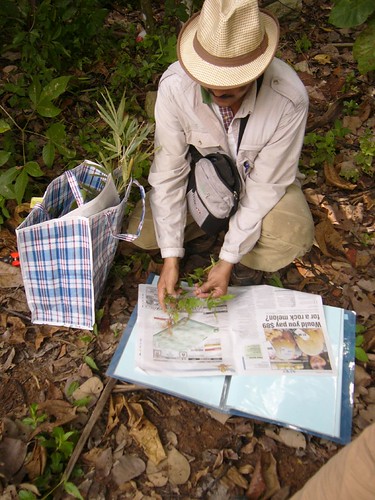
Pakcik Ali Bin Montail, deputy headman of Pulau Ubin, and owner of the blue coffee shop by the Ubin main jetty, passed away on the morning of 30 October 2010. He was 76. Pak Ali was battling cancer in the last leg of his life.
I first read of Pak Ali before I even met him, tasted his wife's wonderful cooking and visited his establishment before I had the honor of being introduced to him. Certificates of honor grace the walls of his coffeeshop. You can see his active service to the people of Ubin through the commendations of his glory days.

Pak Ali was one of "The Spirited Pioneers" featured in the special edition "Nature Watch" magazine by NSS on Pulau Ubin in 1995. It wrote this of Pak Ali,
"From the late 1960s to the 1980s, the younger generation in Ubin began to move to the mainland. It became an unstoppable trend. An islander that seems to have reversed the trend is 61-year-old Ali Bin Montail, the Deputy Headman of Ubin.Over time as I began to be more familiar with Ubin and its residents, I have come to associate Pak Ali with a kindly smile and the fantastic lontong that his wife whips up every Sunday. The wonderful cookies they offer to visitors at his coffee shop during Hari Raya. The friendliness of his family.
Ali had been working on the mainland as an engine driver until 1965 when he returned to Ubin to live and work, also as an engine driver, for Gim Huat Quarry until his retirement in 1986.
Ali had been born in swampy Kallang Rokok (Kallang Basin) and he had been brought to Ubin by his parents when he was a baby.
"We were very poor", Ali recalls. There was no opportunity for him to go to school. When he was growing up, he helped his father tap rubber and fished to supplement their income. After the war years, Ali worked as a vehicle mechanic earning about $2 a day. The hardworking Malay mechanic caught the attention of a British Engineer, Reiner, who advised him to take up night classes.
Ali took his advice and was later encouraged to study for the engine driver's certificate. This professional qualification enabled Ali to earn his living, first with the British RAF power station, and later with the Chinese quarry on Ubin.
Ali got married when he was in his early 20s and he has seven adult children. Like Lim Chye Joo (late headman of Ubin), the affable and energetic Ali threw himself into community service. He served in the Ubin Volunteer Special Constabulary in his younger days and since the late 1970s, he has been tirelessly involved in community centres of Changi and Pulau Ubin.
More than this, Ali also took the initiative to supply the villagers clustered around the main Ubin jetty with electricity. He did this voluntarily for 14 years until TAS took over. For his unstinting service to the community, Ali was awarded the Public Service Medal (in 1983). The indefatigable Ali now runs a food shop in Ubin's main village. He serves fantastic mee siam."
You will be sorely missed.
RIP Pak Ali.




 If you are interested to know more about the native flora of Ubin, the best person to hear from would be Mr Ali Ibrahim, a NParks Pulau Ubin Conservation Officer. Ali has had over 25 years of experience with plants, and many of those years were spent with Ubin flora.
If you are interested to know more about the native flora of Ubin, the best person to hear from would be Mr Ali Ibrahim, a NParks Pulau Ubin Conservation Officer. Ali has had over 25 years of experience with plants, and many of those years were spent with Ubin flora. 



